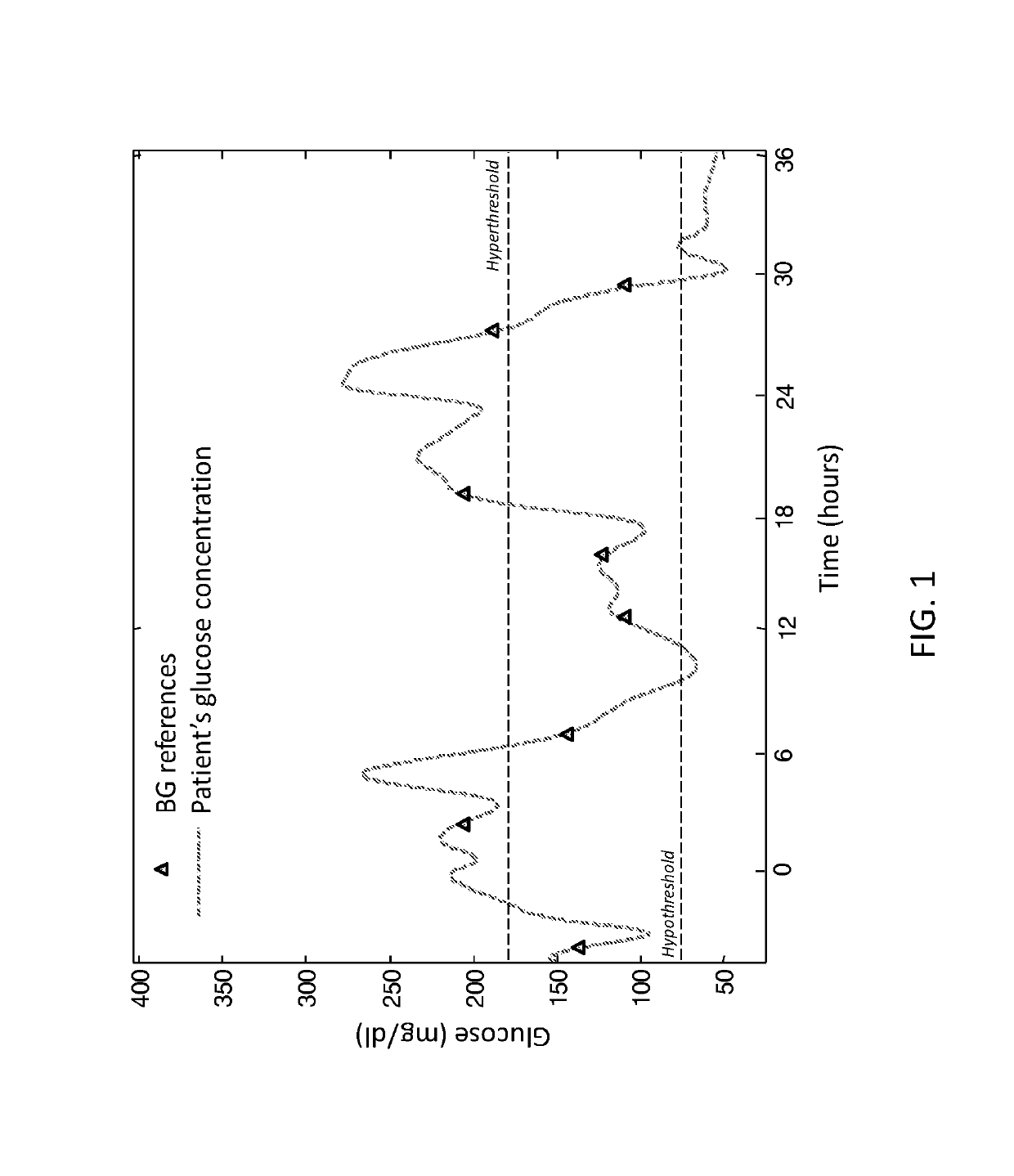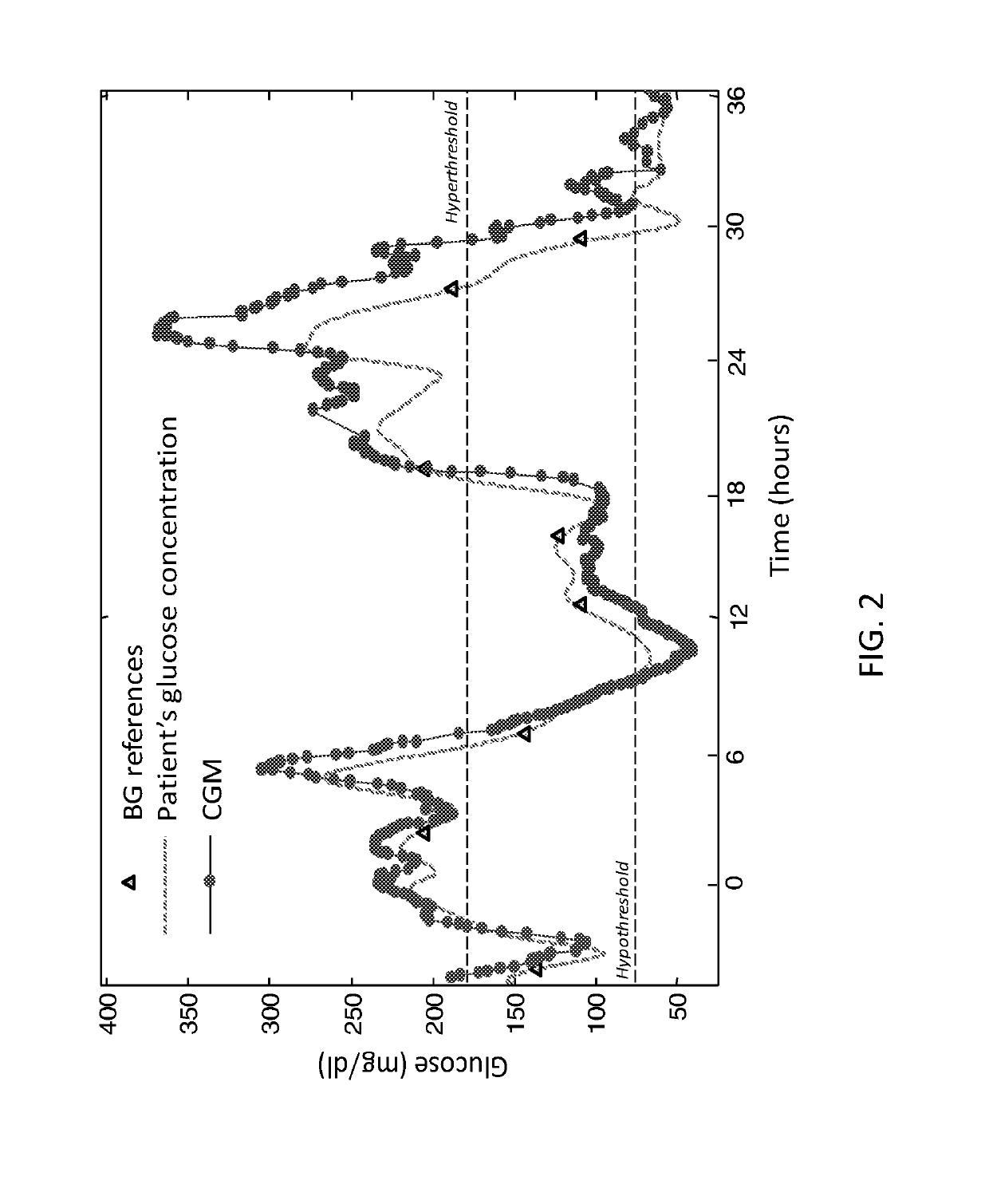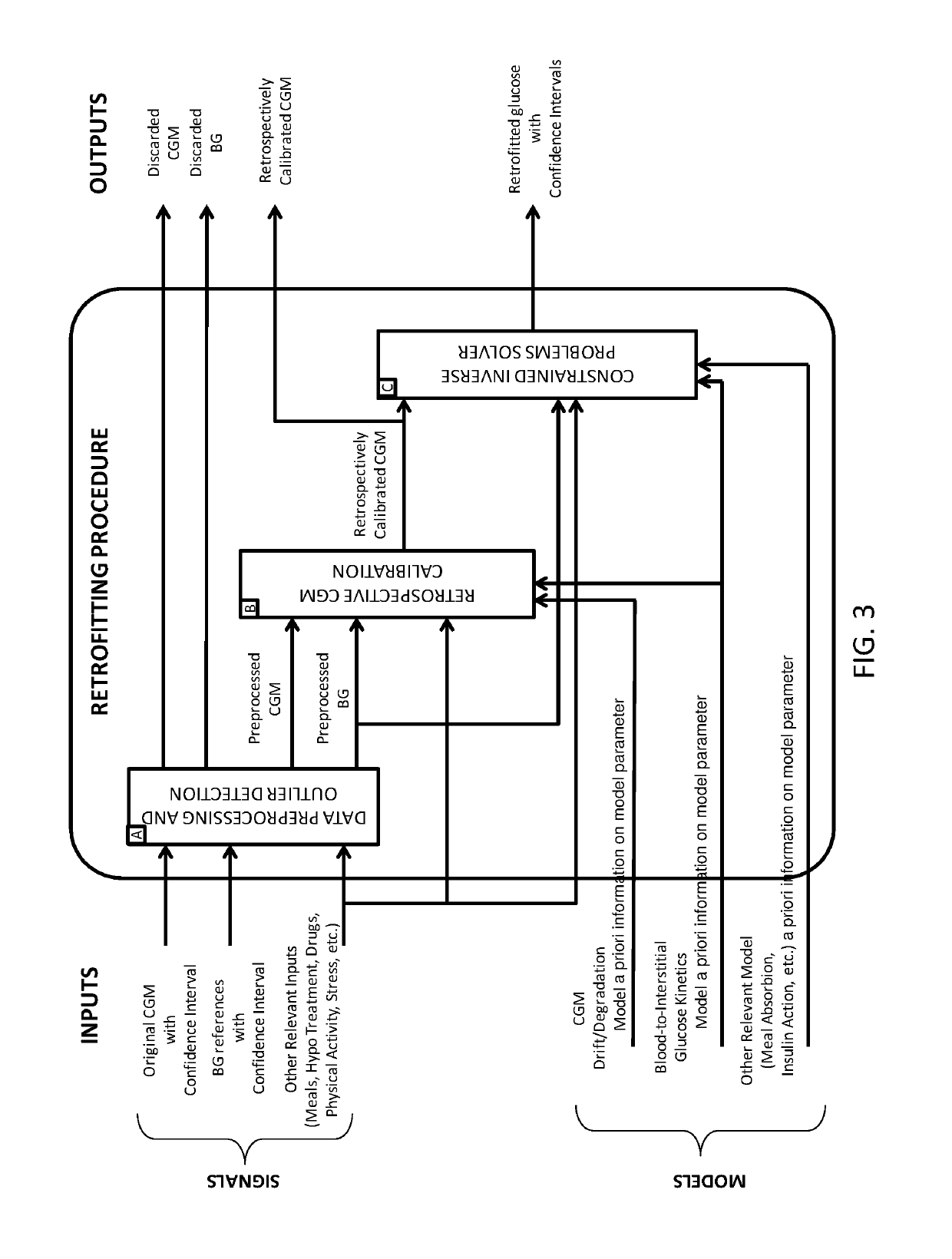Retrospective retrofitting method to generate a continuous glucose concentration profile by exploiting continuous glucose monitoring sensor data and blood glucose measurements
a technology of continuous glucose monitoring and retrofitting method, which is applied in the field of retrofitting algorithm, can solve the problems of slow fluctuations of patient's glucose concentration, inability to detect, and inability to accurately predict the accuracy of cgm devices, so as to improve the accuracy of retrofitting glucose profiles, reduce delays/distortions, and reduce uncertainty
- Summary
- Abstract
- Description
- Claims
- Application Information
AI Technical Summary
Benefits of technology
Problems solved by technology
Method used
Image
Examples
Embodiment Construction
[0028]A preferred embodiment of the invention is now described in detail. Referring to the drawings, like numbers indicate like parts throughout the views. Unless otherwise specifically indicated in the disclosure that follows, the drawings are not necessarily drawn to scale. As used in the description herein and throughout the claims, the following terms take the meanings explicitly associated herein, unless the context clearly dictates otherwise: the meaning of “a,”“an,” and “the” includes plural reference, the meaning of “in” includes “in” and “on.”
[0029]FIG. 3 is a block scheme representing how the retrofitting algorithm works. On the right side, signals and models giving an input to the retrofitting algorithm as shown. In the middle section the core of the retrofitting procedure comprising three main sub-blocks is depicted: A. data preprocessing and outlier detection, B. retrospective CGM calibration, and C. constrained inverse problem solver. On the left side these signals ret...
PUM
 Login to View More
Login to View More Abstract
Description
Claims
Application Information
 Login to View More
Login to View More - R&D
- Intellectual Property
- Life Sciences
- Materials
- Tech Scout
- Unparalleled Data Quality
- Higher Quality Content
- 60% Fewer Hallucinations
Browse by: Latest US Patents, China's latest patents, Technical Efficacy Thesaurus, Application Domain, Technology Topic, Popular Technical Reports.
© 2025 PatSnap. All rights reserved.Legal|Privacy policy|Modern Slavery Act Transparency Statement|Sitemap|About US| Contact US: help@patsnap.com



